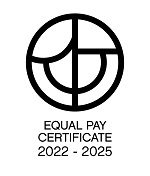Fees for quotas were in line with market prices in Namibia
After Norwegian law firm Wikborg Rein finalized its investigation, into the activities of companies affiliated with Samherji in Namibia on July 28th and presented its findings to Samherji's board, the company has in various ways corrected and refuted allegations that have been made against it.
Samherji has now commissioned an analysis of the pricing of the quotas that companies affiliated with Samherji leased while operating in Namibia. The analysis consisted of a comparison of prices in catching agreements between unrelated parties. The comparison confirms that companies affiliated with Samherji paid the market price for quotas.
Companies affiliated with Samherji were never allocated any catch quotas in Namibia. Instead, the companies leased the right to quotas that had been allocated to locals.
We have already released information about the losses suffered in Namibia and the taxes paid to local authorities. This statement, however, is related to an audit that Samherji commissioned due to allegations that the price paid for the lease of fishing rights under agreements with Fishcor and Namgomar was far below the market price.
While Samherji's companies were operating in Namibia, they leased catching rights from private entities, such as the Joint Ventures and the company Namgomar, which was granted quotas pursuant to an international fishing agreement between Angola and Namibia. They also leased catching rights from Fishcor, a Namibian-owned fishing company. Samherji firmly denies that quotas were leased from these parties at a price that was lower than the market price. Allegations to that effect are unfounded. In fact, the price paid under the agreements with Fishcor and Namgomar was always equal to or higher than the price paid by Samherji-affiliated companies to other quota holders in Namibia.
The allegations that have been made about the price for quotas form part of a larger narrative according to which companies affiliated with Samherji are accused of having paid bribes to secure catching agreements grossly below market prices. It has also been claimed that companies in the Samherji Group did everything in their power to pay as low tax in Namibia as possible and that these contributing factors, together with the rich profits from operations in Namibia, mean that Samherji was in fact robbing a developing country.
In order to find out what the correct market price was for catch quotas during the years that companies affiliated with Samherji had had operations in Namibia, agreements with six unrelated Namibian companies that held catch quotas were reviewed. Each of these companies was profit-driven and operated on the open market.
The price in these agreements was then compared with the price paid by companies affiliated with Samherji under agreements with Fishcor and Namgomar. A total of thirty-nine comparisons were made. In all but one case, the price paid by Samherji for catch quotas under agreements with Fishcor and Namgomar was equal to or higher than the price paid under agreements with other companies.
A price comparison was also made in similar agreements made by other commercial fishing companies, domestic and foreign, with quota holders in Namibia. This was done to ensure that the price paid by Samherji's affiliates under the agreements with Fishcor and Namgomar was not unreasonably low and also to dispel suspicions that the agreements relied on had been selected explicitly to ensure a favorable outcome. In the vast majority of the contracts examined in this second wave of comparisons, the Fishcor and Namgomar fees were equal to, or higher than, fees in other commercial fishing companies' contracts with Namibian quota holders.
Despite the fact that individual employees did not follow procedures and working methods that Samherji strives for in all its operations, it is clear that the company is responsible for discipline and supervision and must intervene decisively when the required vigilance is not maintained. It seems clear that the leasing of catch quotas in Namibia has in some cases lacked such control and intervention. However, this does not change the main conclusion of this analysis, which is that companies affiliated with Samherji paid market prices for the quota they leased.
In the near future, Samherji will continue to correct misrepresentations and at the same time report on procedures and working methods that were deficient.
For further information, contact:
Margrét Ólafsdóttir
margret@samherji.is


